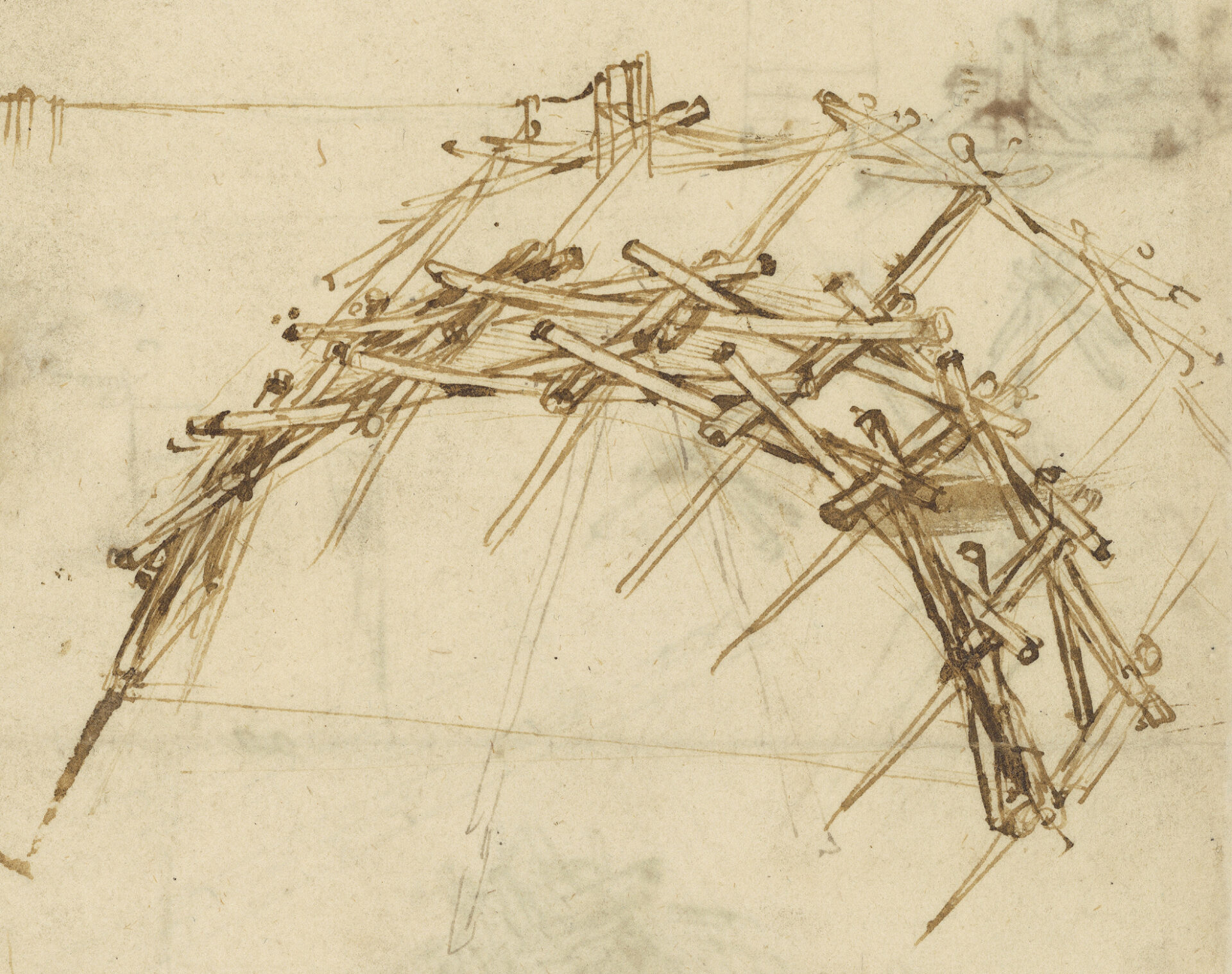Browsing traces of the past: Leonardo da Vinci’s self-supporting bridge
In the vast array of Leonardo da Vinci’s works, one of his lesser-known yet most fascinating projects is undoubtedly the Bridge over the Bosphorus. This ambitious endeavor, conceived in 1502 at the request of the Ottoman Sultan Bayezid II, represents not only an expression of Leonardo’s genius but also a tribute to the ancient art of wood in construction.
The use of wood in construction is a practice that dates back to ancient times, when early human civilizations learned to harness nature to build shelters, bridges, and dwellings. It is a material that has stood the test of time, demonstrating its versatility, strength, and availability in a wide range of applications.
Leonardo da Vinci’s Bridge over the Bosphorus project is a perfect example of how wood has played a fundamental role in the history of construction. In his original design, Leonardo envisioned the use of wooden beams for the bridge’s supporting structure, leveraging the natural properties of this material to ensure solidity and stability to the structure. Moreover, the bridge was intended to be self-supporting, capable of standing on its own without the aid of external supports, demonstrating Leonardo’s ingenuity and innovative vision.
While the Bridge over the Bosphorus project was never realized during Leonardo’s lifetime, his ideas have influenced generations of engineers and architects. Over the centuries, alternative materials such as metal and reinforced concrete have been developed, but wood continues to be a popular choice for construction, thanks to its availability, versatility, and low environmental impact.
In conclusion, Leonardo da Vinci’s Bridge over the Bosphorus project is much more than just an idea; it is a tribute to the ancient art of wood in construction, which continues to inspire and amaze even in modern times. Like a bridge connecting the past to the present, this project reminds us of the importance of respecting and preserving ancient traditions as we look to the future of architecture and engineering.
